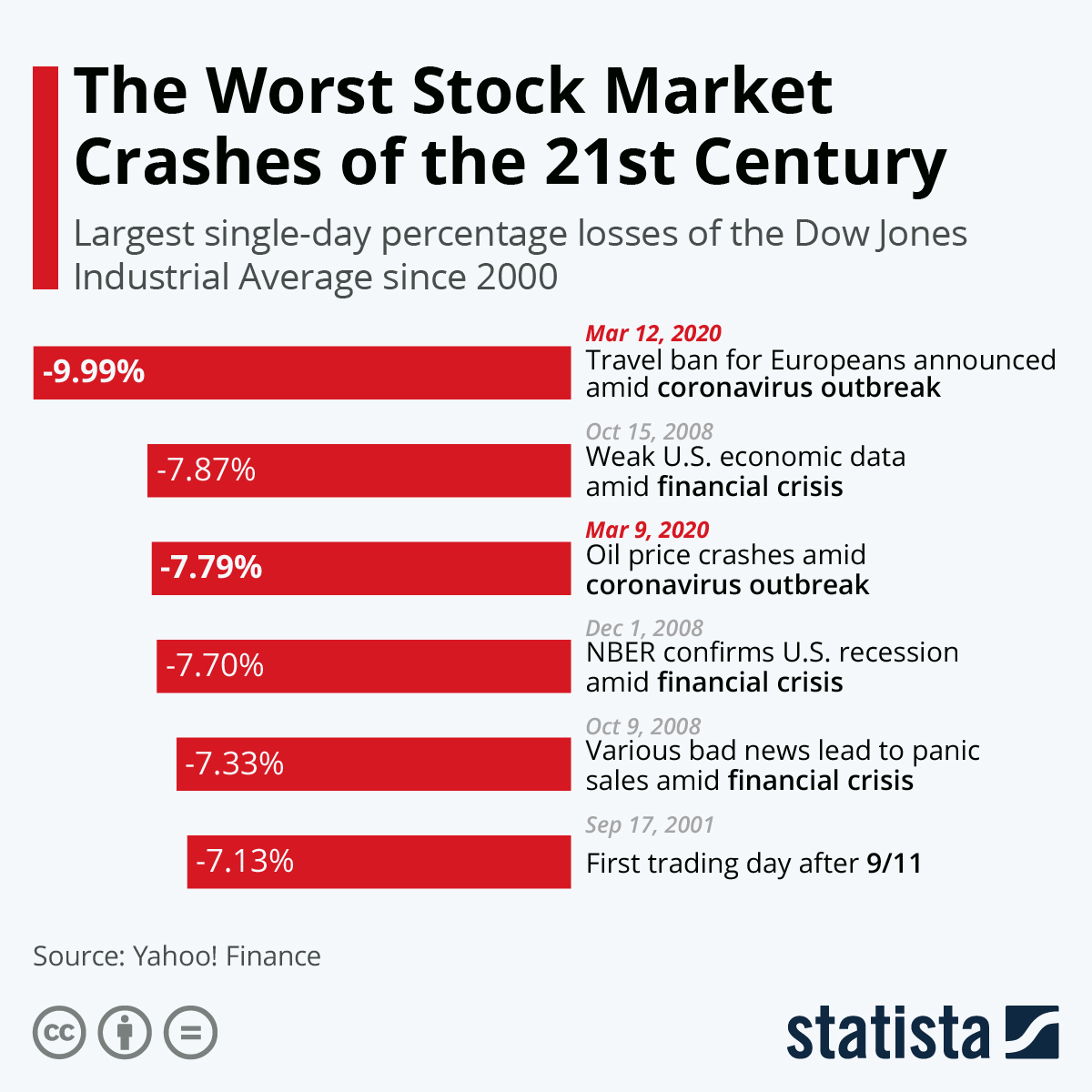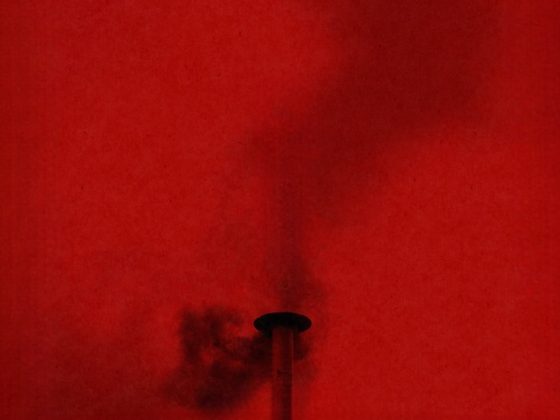The COVID-19 outbreak has led to a series of terrible weeks for the stock markets all over the world.
Yahoo! Finance reported that the Dow Jones Industrial Average closed at 19,904.04 last March 19, shedding 6.28%. This is the lowest close of the stock index since February 2017 and the first time in a while that the Index scored below 20,000.
This pandemic, now with around 343,421 confirmed cases and 14,790 deaths across the world as of the March 23 tally of Johns Hopkins CSSE, also placed some of this year’s closing stocks among the worst market crashes of the 21st century.
The graph below displays the worst market dips recorded in the current century, using the Dow as the metric.
Highlights
March 12, 2020, which was when President Trump announced a travel ban for the Europeans due to the worsening outbreak marks the largest single-day loss of the Dow since the year 2000. That day, the Index closed losing massive 9.99 percentage points.
This makes March 12 drop even worse than the days of the 2008 global economic crisis. At its peak on October 15, 2008, the Dow recorded a huge 7.87 percentage-point decrease.
The third worst single-day decline was recorded on March 9, 2020, which was when oil prices crashed, still in the midst of the COVID-19 outbreak. The Index was down by 7.79 percentage points.
The fourth and fifth worst records of the Dow were both recorded during the 2008 financial crisis.
The first one was when the National Bureau of Economic Research (NBER) confirmed recession in the U.S. This led to a decline of 7.70 percentage points. The second one would be when the spread of bad news led to panic selling, resulting in a decrease of 7.33 percentage points.
The loss on March 12 is also worse than the days immediately succeeding the 9/11 bombings back in 2001. The first trading day after the tragic event, the Index was down by 7.13 percentage points.
Overwhelming impact
March 12 is now etched as the largest single-day drop of the Dow since the Black Monday sell-off of 1987 and the fourth largest single-day drop throughout the 120-year history of the Index. This clearly shows how much the pandemic is impacting the economy.
Yahoo! Finance said that the COVID-19 pandemic has further fueled the volatility of the Dow, causing it to move up or down by 1000 points or more for eight straight days. They also said that this dip almost completely negates the economic gains experienced in the Trump administration thus far.
This pandemic is also projected to put the observed economic growth across the world to a halt.
“There is no longer doubt that the longest global expansion on record will end this quarter,” according to J.P. Morgan economists in a note. “The key outlook issue now is gauging the depth and the duration of the 2020 recession.”










